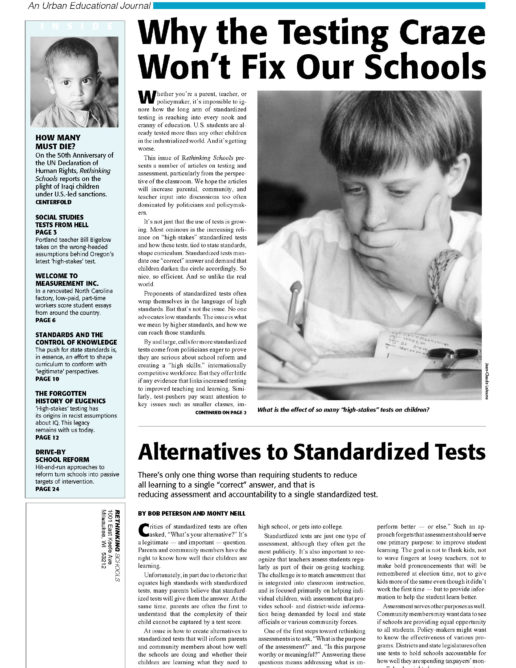Preview of Article:
Monkeys, Pouches, and Reading
What does it do to young children, and how does it distort good teaching, when reading success is determined on the basis of a single test?
Jordan wore his jeans on his hips and his Nikes unlaced. His “cool” image was thin, though, and easily shattered by his inability to meet grade-level standards. By his mother’s accounts, her heavy drug use during pregnancy had probably affected him neurologically, resulting in learning and behavior problems. He tried hard to “be good,” but his short attention span and hyperactivity were to his disadvantage. His mom was in the process of taking him to a doctor for a possible diagnosis of ADHD; the school was considering testing him for special education. However, in March, when the Third Grade Reading Test was given, Jordan did not have a specific label for his difficulty with reading. He had to take the test.
The other students who were struggling with the test that year had similar stories. One girl, Rita, was very likely learning disabled, but her parents were monitoring her progress, not yet ready to lay a label on her. Another girl, Tasha, had come into my classroom as a second grader with virtually no reading skills, but a lot of street knowledge. “You can’t imagine all I seen,” she had confided the first week of school. Tasha had made tremendous progress in the year and a half she was my student. She could read fourth-grade level stories at the time of the test. Tasha, however, who read well when motivated, was obviously bored when she took the test. She wiggled in her seat, getting up and down and finishing the stories and short-answer questions quickly.
“Did you check over your answers?” I asked.
“Yeah,” she said, picking up the book that she really wanted to read, the biography of an African-American girl who was a spy during the Revolutionary War.
Eric also was capable of reading the text, but spent most of his time poking his pencil through the holes of the pegboard next to his desk. He had been seeing a psychologist for an anxiety disorder.</p

